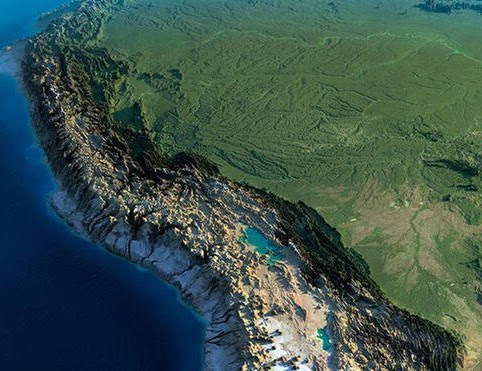Before understanding how magmas develop or form, we must understand what magma is and where they are found. Over the years we have been eyewitnesses to large volcanic eruptions around the world that have impacted us visually, on health or unfortunately have caused significant human and material losses. But they have also given a show when the eruption took place at night, as the bright red color illuminated the surrounding landscape with magma being expelled from the crater of the Volcano. But what is magma and where does it originate?
The ancient Greeks called magma "paste" to what we can understand that magma behaved like a special type of paste, which could be composed of various elements such as volatile liquids, solids and molten rocks; which was expelled with violence towards the outside or in other cases in a slow but progressive way.
So in what exact places on the planet do magma form or develop?
Magmatism is the process of magma formation, therefore, 80% of the magmatism of our planet occurs at the constructive edges of the tectonic plates, under the oceanic ridges, and the rest in subduction zones and in regions located in the inside of the plates, due to the effect of hot spots. (one)
Depending on the process in which we find ourselves, the formation of magma (or partial melting of the rock) will depend on the geothermal energy of the area, which we will explain in the following graph.
The graphic above presents 4 situations in which magma could form or develop. To understand the graph we have to understand that the present red line represents the geothermal curve of the area and the green line represents the temperature of the existing rocks. Furthermore, these conditions occur up to a depth of 500 km and a temperature of up to 2000 ° C. Being clear about these characteristics we can continue that:
1. In situation A, in a normal situation, where there are no ridges, no hot spots and no subduction, magmas cannot develop, since qualitatively for magma to develop or form, it is curved (geothermal and rock) must intersect with each other to start the partial melting of the rocks. And as we can see in areas of our planet where these geological conditions do not exist (subduction, hot spots or dorsal), magma cannot form or accumulate.
2. In oceanic ridge areas, the geothermal gradient increases dramatically compared to normal areas. The geothermal gradient curve before reaching approximately 10 km depth changes irretrievably to a temperature of approximately 1250 ° C, so the geothermal gradient curve qualitatively changes. This makes it intercept with the temperature curve of the rocks at approximately 40 km depth, exceeding 1250 ° C in temperature, thus forming magma in this geological condition.
The fusion under the ridges may be due to the decrease in pressure in the rocks as a consequence of their rise by convective movements, in solid, of the mantle. The rise to the surface of these primary and undifferentiated magmas is the origin of the immense basaltic masses of the ocean floor. (one)
3. Something similar happens in situation C where there is the presence of Hot Spots (hotspot) on Earth. The geothermal gradient increases steadily and progressively, compared to normal areas, until before 100 km depth, reaching temperatures of up to 1500 ° C. Before reaching depths of 100 km, partial melting of the rocks takes place, forming magma, maintaining the temperature almost constantly. Qualitatively the curves on the graph will have intersected.
4. In subduction zones, the geothermal gradient increases steadily and gradually, as if it were a normal condition, but the temperature of rocks in subduction zones decreases from 1250 ° C to 950 ° C, to depths of the 35 km.
Then, the temperature of the rocks increases little by little when we go to greater depths. Upon reaching approximately 85 km depth, partial melting of the rocks occurs, causing magma.
The fusion is produced by the increase in temperature due to the compression of the subducting lithosphere and friction with the rocks of the mantle, to which is added the water that releases and rises. Magmas are formed that will give rise to the typical batholiths of the orogenic zones. (1)
"Geophysics is the science that is in charge of the study of the Earth from the point of view of Physics. It investigates and analyzes the origin of various natural phenomena such as tsunamis, earthquakes, volcanic eruptions, etc., using indirect tools for its study by taking as a basis quantitative methods and methods based on measurements of gravity, magnetic, electromagnetic or electrical fields. " - Science and Geophysics
BIBLIOGRAPHIC REFERENCE
(1) https://es.m.wikipedia.org/wiki/Magma





























































